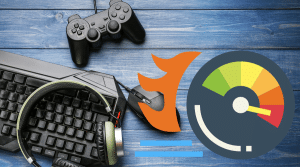Music blogs may now compete with playlists and algorithms driving streaming consumption, yet niche sites publishing compelling content around artists and scenes can still foster highly engaged communities. By embracing multimedia formats and optimizing for social media, new entrants to music blogging can gain traction.
This expansive guide draws on the latest industry data and leading music blog case studies to provide actionable recommendations on standing out in the current media landscape. Whether just starting out or looking to improve an existing publication, leverage these best practices to grow your readership and authority in 2024.
Why Start a Music Blog Right Now?
In an era where Spotify and TikTok dominate music discovery, what value do blogs still provide? As streaming platforms mature, music fans crave meaningful connections and context around the artists they listen to. Niche blogs satisfy these needs through passionate curation, insider access, and participatory conversations that algorithmic recommendations lack.
Some key statistics confirming the ongoing influence of music blogs:
- 2.6 billion online music content viewers globally [Source: MIDiA]
- 68% of fans discover new music on social media, where blogs actively contribute [Source: Audiense]
- Music site visitors spend over 6 mins per session reading articles and listening to tracks [Source: Parse.ly]
- 100% growth for Substack music newsletters last year, highlighting engagement with blogs
So whether just starting out or looking to improve an existing site, the opportunity exists to thrive as a music publication in 2024. Choose the right niche, establish a consistent multimedia content strategy, and let your unique voice shine through.
Choosing the Right Music Blog Niche and Scope
Before firing up WordPress and posting your first article, put thought into identifying the specific music segment which you’ll spotlight. By narrowly targeting a underserved genre, scene, or micro-community, you stand out rather than getting lost as a general indie music blog.
Music Blog Niche Ideas
Based on current popularity and room for growth, here are 5 music blog niche ideas perfect for 2024:
- Underground hip hop by city: Focus on LA, Atlanta, NYC
- K-Pop fan community: Cover latest Korean pop artists
- Next wave psychedelic rock: Spotlight emerging guitar bands
- DIY bedroom pop: Profile lo-fi singer-songwriters
- Underground house music: Dish on newest deep house and techno releases
Consider your music knowledge, access to artists, and interests. Avoid chasing trends or oversaturated genres like celebrity pop or commercial country where establishing unique positioning is difficult.
Defining Your Music Blog’s Scope
Once a niche is chosen, define the parameters around what you will and won’t cover. This allows readers to understand what perspective and musical DNA to expect from your content.
For example, niche music blog Glide Magazine focuses on roots music spanning Americana, blues, folk and soul. The blog Popspoken publishes commentary and interviews related to pop culture in Asia.
Keep your description tight yet distinct. As your blog grows, scope can expand – but begin by cultivating depth of expertise around your initial niche.
Building an Effective Music Blog Content Strategy
Consistently publishing quality articles, reviews, and multimedia content about your niche sparks viral word of mouth and long-term loyalty. Set a maintainable cadence for content output based on your available time.
To drive recurring engagement through value-added entertainment, information, and music discovery, incorporate these elements across post formats:
Curate New Music and Emerging Artists
- Songs/albums roundups: Feature 5-10 promising new releases each month with embedded streams
- Radar playlists: Curate Spotify/Apple Music playlists spotlighting fresh talents
- Artist spotlights: Profile rising talents through Q&As and career profiles with visuals
Report Relevant and Timely Niche Music News
- Concert announcements/reviews: Cover live show updates especially smaller venues
- New label deals: Report on artists from your niche signing major or indie label contracts
- Music controversies: Weigh in on genre-related debates making headlines
Conduct Artist Interviews and Guest Contributor Posts
- Artist/industry Q&As: Sit down with musicians, producers, or labels through email, video, podcasts
- Behind the scenes exclusives: Firsthand tour content directly from bands
- Guest submissions: Enable fans, fellow bloggers etc. to contribute their stories
Entertain and Inform Through Listicles and Guides
- ‘Best of’ roundups: Top albums/songs of the month or year, ranked definitive discographies etc.
- How to’s: Create guides to playing instruments, home recording on a budget, stage performance tips
- Pop culture crossover: List favorite musician movie cameos, anime song covers, TikTok memes etc.
Publishing a diversity of articles allows you to target multiple keywords and keep providing reasons for new and returning readers to visit your site.
Optimizing Visual Content for Music Blogs
While the written word anchors blogs, incorporating arresting images, graphics and video significantly lifts engagement and social sharing.
To make memorable visual impressions, tap into these formats:
Spotify Canvas Looping Images
- Feature cool cover artwork or music video clips that loop for Spotify playlist listeners
Shareable Infographics
- Visualize niche music data from sales figures to concert costs using canva.com templates
YouTube Music Reactions
- Capture webcam reactions to anticipated album releases from you and fans
Artist Photo Galleries
- Compile tour pictures, gear shots, and candid snaps then provide captions
Behind the Scenes Concert Footage
- Short smartphone videos give fans insider perspective from live shows
Branded images, graphics, and videos boost social media engagement and recognition for your blog’s musical taste. Invest time into compelling visuals!
Marketing Your Music Blog on Social Platforms
While long-term organic search traffic allows blogs to reduce reliance on any one platform, strategically using social media provides immense exposure early on.
Monitor conversations already occurring around your niche music scene and participate through relevant hashtags. Let your personality shine by responding to updates posted by artists, labels, other blogs etc.
Below we analyze key platforms to determine where niche music blogs should be active:
Based on your target demographic – whether Gen Z bedroom pop fans or middle aged Grateful Dead collectors – allocate sufficient time to create and engage content on key platforms.
Set measurable goals around follower growth for each platform and continue providing multimedia content that persuades new visitors to subscribe for alerts on site updates. Social visibility supports long-term SEO strength.
Making Money From Music Blogs
Generating income may not be the initial motivation for your blog, but monetizing a loyal following allows you to reinvest in better content. Explore these revenue streams once you reach 25,000+ monthly visitors:

Music blogs also broker creative brand partnership campaigns, from playlist sponsorships to artist album teasers distributed as premium social videos for labels.
Stack income sources over time to turn your music blog from a passionate hobby into a sustainable commercial endeavor.
Advanced SEO Strategies for Music Blogs
While social media delivers short bursts of visitors, SEO focused on keywords and links popularizes niche music blogs for the long haul.
Below we detail technical optimizations, targeted content, and link building tactics to maximize search visibility and performance:
Technical SEO Checklist
- ☑ Fast site speeds under 2.5 seconds load time
- ☑ Secure HTTPS URL
- ☑ Responsive mobile optimization
- ☑ XML site maps and robots.txt
- ☑ Descriptive metadata tags on all pages
- ☑ Expiry tags to cache media assets
- ☐ (Avoid) excessive display ad placements
Keyword Optimization Guide
- Identify 20-30 primary niche keywords using Google’s Keyword Planner
- Assign focus keywords to related posts
- Prioritize keywords in titles, URLs, subtitles, bolded text
- Interlink older evergreen content around target keywords
Link Building Blueprint
- Reach out to similar niche blogs for contributor posts
- Curate resources pages linking 20-30 external music sites
- Secure backlinks within artist/label press release quotes
- Interview rising musicians, obtain quote citations linking to your content
Deliver expertise and advocacy for your niche music community first through valuable blog content. SEO visibility will follow.
Podcasting Power: Launching a Music Podcast
As music fans flock to podcasts for artist interviews and dissecting albums, launching audio programming aligns perfectly with blogs hungry for more multimedia touchpoints.
Consider podcasting if your blog already attracts over 50,000 visits monthly. Record episodes focusing on your existing content strengths, whether commentary or longform Q&As. Distribute across multiple platforms:
- Spotify: Maximizes listeners
- Apple Podcasts: Essential for iPhone users
- YouTube: Additional video element expands reach
- Your blog: Host on site with links to audio players
Promote new podcast episodes the same way you would a provocative blog post: across social media, email newsletters, and embed playable excerpts within relevant articles using Spotify’s WordPress plugin.
Listener reviews and ratings help boost discovery and encourage sponsors. So be consistent releasing episodes!
Why Small Music Blogs Can Still Break Through
In a saturated music media environment, newer blogs need not be intimidated. Established sites may boast higher traffic metrics right now but likely cover music more generally compared to your niche specificity. That intense focus is an advantage.
By relentlessly delivering quality coverage around your defined music scope while interacting across social listening spaces, smaller yet scrappy music blogs develop influence and community impact over time. Let your indie spirit and differentiated POV shine!
Top Music Blogs Worth Learning From
While your independent music blog need not imitate larger publications, understanding what drives engagement for successful sites provides useful competitive intelligence:
From multimedia content blends optimized for platform sharing to revenue diversification, model strategies working for music media leaders while expanding upon them distinctly through your niche coverage.
Turning Music Passion Into a Thriving Blog in 10 Steps
For readers inspired to launch their own music blog after digesting this guide, we present a condensed step-by-step checklist:
1. Identify your distinct music niche (genre/scene)
2. Register domain and setup WordPress site
3. Design visually appealing theme/logo on Canva
4. Start social accounts on key platforms
5. Set content calendar for first month
6. Create playlists and share new music
7. Engage social conversations around niche
8. Publish regularly, diversify formats
9. Monetize through ads and affiliates
10. Track growth and expand!
Execute on the personalized strategies outlined throughout this resource. Consistency creates authority. Trends change, yet blogs influencing music culture continue adapting – which you are now well equipped for!
Frequently Asked Music Blog Questions
For readers with lingering concerns around optimizing search visibility, measuring content, handling copyrights, building traffic, and possible monetization, we’ve compiled this handy FAQ:
Q: How long does it take for a new music blog to rank on Google?
A: Typically 6-12 months minimum before seeing search rankings, assuming you publish 75+ keyword-optimized articles and build legitimate backlinks during that timeframe. Patience and consistency drive results.
Q: What analytics software should I use?
A: Google Analytics provides free yet powerful website traffic insights. Also use Google Search Console to monitor keyword data.
Q: Can I upload full album streams or music videos?
A: Legally, avoid uploading full albums without artist permission to avoid takedowns. Short song previews, official music videos, and links to third party hosts like YouTube are recommended.
**Q: When should I start generating income from my music blog?
A: After hitting at least 25,000 monthly visits with stable growth, introduce display ads through Mediavine, Google Adsense or Amazon banners. Gradually diversify revenue over 50,000 visits.
Q: What’s better for driving traffic, podcast or newsletter?
A: Assuming you have over 40 blog posts already, start a newsletter first to convert existing readers before doing a podcast which demands more production effort. Offer value to newsletter subscribers only.
We hope these answers provide reassurance around the opportunities of launching an influential music blog that covers the latest emerging artists while supporting your readership. Now finalize that niche and start creating!














